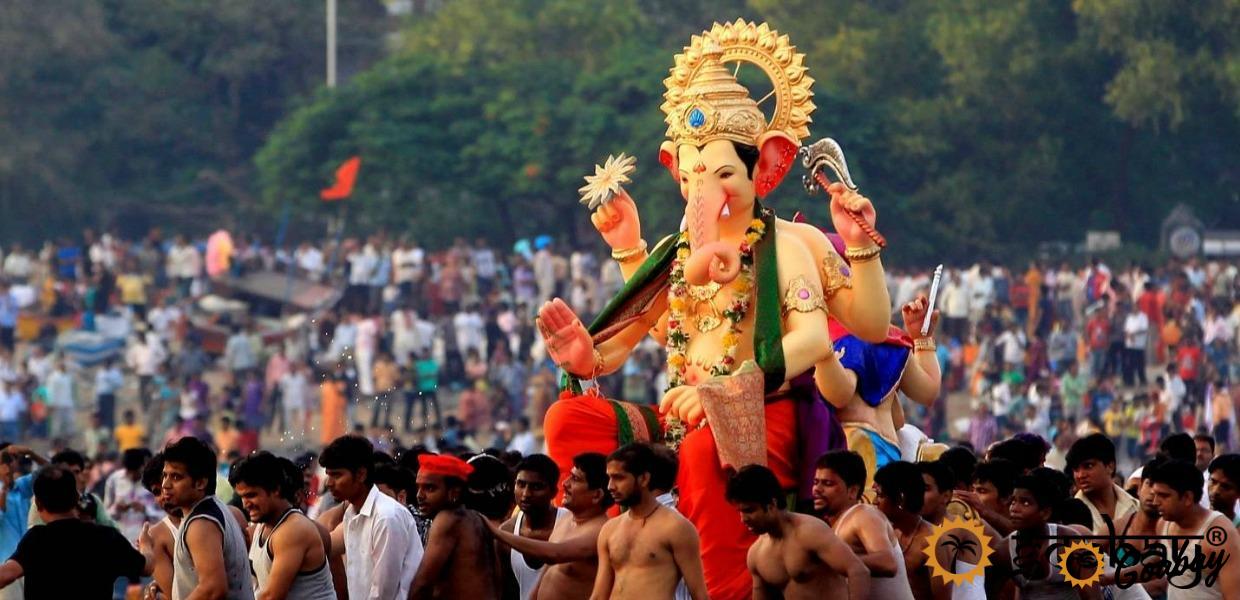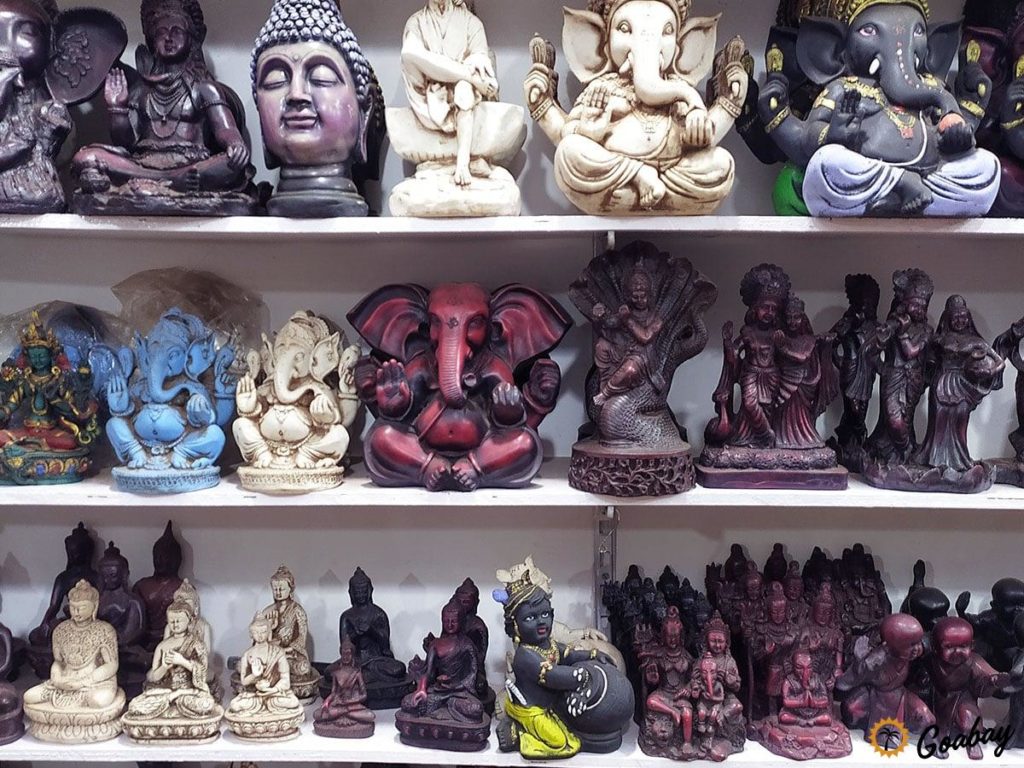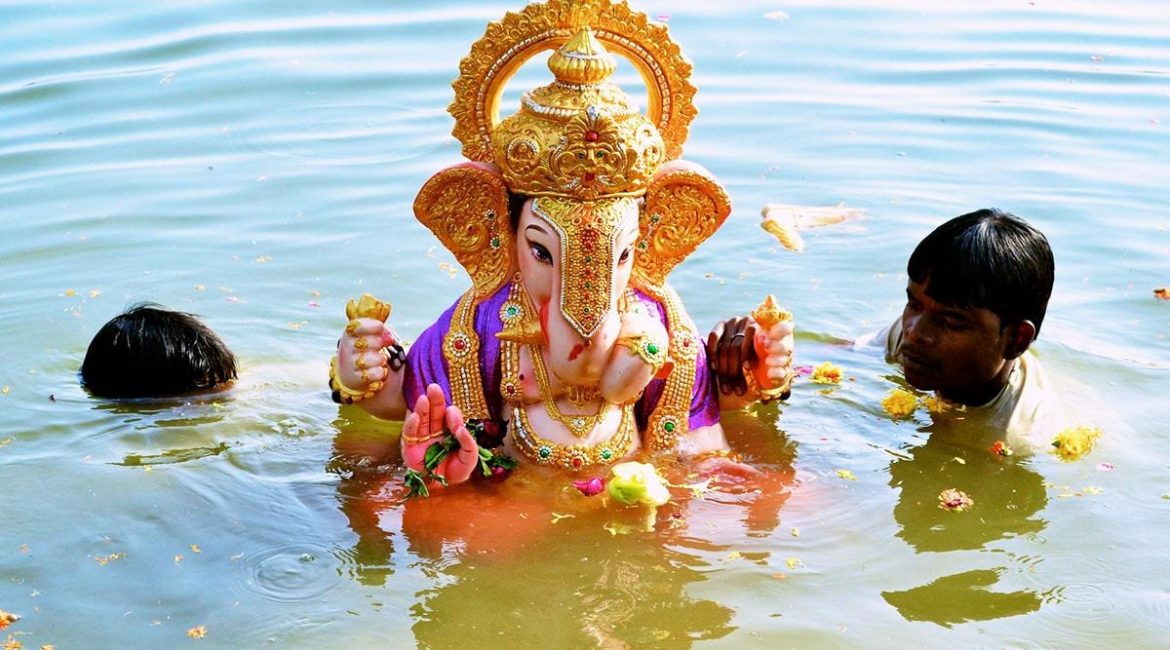While the dank autumn comes into its own in USA and Europe, the rainy season is calming down in India and a month later a new tourist season will begin in sunny Goa! But before the arrival of numerous guests, local people also need to have time to relax and have fun. And they have a wonderful occasion: the first autumn months are a series of Hindu holidays. One of the brightest of them is the Ganesha Chaturthi Festival, which this year is on 13th September.
Content:
Who is Ganesha?
Perhaps the most recognizable of the great multitude of Indian gods, elephantine Ganesh celebrates his birthday in late August – mid-September. There are a lot versions of legend of his origin and unusual appearance. Ganesh or Ganapathi is the son of the great god Shiva and his wife Parvati. According to one version goddess during a long absence of her husband bored and decided to create the child by herself.

She went to bathe on the river, there scraped the dirt from her body and molded the figure of the boy. Parvati breathed life into it and called Ganesh. And after a while Shiva returned home. But the way to his house was blocked by an unfamiliar young man. Mother asked the grown Ganesha to protect her rest during bathing. Angry Shiva in a fury cut off the boy’s head and threw it so far away that no one could find it. Upon learning of what had happened, Parvati began to reproach her husband and demanded to return life to her beloved son.
Shiva, the god of destruction, turned to Vishnu, the creator of the universe, for help. And he followed his wise advice: to go into the jungle and chop off the head to the first animal that met him. Ten paces from the thicket elephant went to Shiva. And so life returned to Ganesha along with a new appearance. Parvati forgave her husband, and the family healed happily.
An elephant in India
In India the elephant has long been a revered animal, an indispensable assistant in the economy and a symbol of strength, a sign of wealth in the royal courts. It is not by chance that the god of knowledge and prosperity is portrayed as a plump man with an elephant’s head.
Did you notice a little mouse next to Ganesh? This is his terrestrial animal – Mashuk. There is an interesting interpretation of such an unusual duet. Ganesh symbolizes wisdom and the mouse is the mind. And now under the noble weight of knowledge, the restless mind calms down and easily goes wherever the host wishes.
Being in India and traveling from state to state you will hear many fascinating legends about the life and adventures of Ganapati. More than once he came to the aid of the elder gods and people. Any important undertaking is preceded by a special ceremony in honor of Ganesha, his name is the key to success.
How is the holiday go?

A year ago I was lucky to be in one of the first days of the festival in Mumbai, the capital of the state of Maharashtra. Although, for many, such “luck” would seem rather a punishment. Towards evening the streets were filled with people who harnessed into huge platforms.
Let’s not forget that India is a very diverse country in terms of traditions and religions. And even among Hindus the customs of the celebration of Ganesha Chaturthi may differ. With a special scope it is celebrated in the states of Maharashtra, Karnataka and Andhra Pradesh.
Preparation for the celebration begins in a few weeks. Each family decorates the altar, where the figure of the deity is placed. Wealthy citizens even turn to special agencies, which create an incredible composition of flowers, fabrics, rhinestones, colorful shiny paper. Ganesha is necessarily presented with gifts and treats. He is known as a big sweet tooth and likes ladu – rice balls with sugar filling.
The duration of the celebration can vary, but most often it is divided into three stages – 3, 5 and 11 days. After the first period of offerings and thanks some Indians refer the statue of the deity to the nearest pond and plunge into the waves.
They explain this by the fact that Ganesh lived all year in their house, absorbed all sorrows and troubles, and now it’s time to dissolve them. After that, a new murti (an image of the deity) is brought into the house and “invited” Ganapati to become a member of the family until the next holiday. Figures made of clay or salt, brightly painted. On the eve of the holiday, all markets are full of different sizes and levels of luxury statues and “accompanying goods” – altars, lamps, boards for splitting coconuts.
They were placed statues of Ganesha and huge columns or live drummers on it. The deafening music, dancing on the verge of ecstasy – all this procession moves slowly and tirelessly. It is noteworthy that water and food were distributed to all those who wished. But you can simply forget about moving around the city by transport! If you are in such a festive cycle, then give yourself to the universal jubilation without a trace and soak up the inimitable color of India itself, which was read in books.
What you can buy for Ganesha festival

In memory of such an event you can bring home your own Ganesha, who will take care of removing obstacles on the way to a good goal. Bright T-shirts with Ganapati also look very nice, worn which is not considered shameful even among the Hindus themselves.
There is huge variety of incense and sweets, nuts and dried fruits, which are easy to buy in the market or in the store during this period. The Ganesha Festival opens a series of big and small celebrations that you can get to if you start your trip a little before the official tourist season in India and take care of tickets in advance. (ссылка на статью о билетах).
Aum Shri Ganeshaya Namah!





